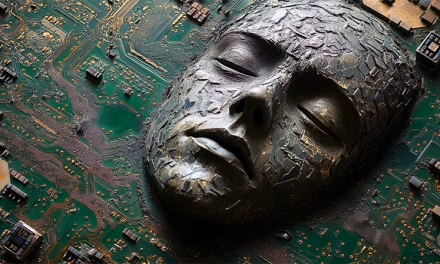For the first time, we’ve found a way to create real particles through strong electromagnetic fields here on Earth. Turning energy into matter, it’s literally making something from nothing.
Since the 1930s, scientists like Georges Lemaître proposed that even in the vacuum of empty space, devoid of masses, charges, curved space, and any external fields, the laws of nature and the quantum fields underlying them do still exist. And those fields have energy. And there’s an experiment you can perform to demonstrate that empty space isn’t truly empty.

All you need to do is place a set of parallel conducting plates in this empty region of space. While you might expect the only force between them would be micro-gravity, set by their mutual gravitational attraction, what actually winds up happening is the plates attract by a much greater amount than gravity predicts. An electric field that comes from the “empty” vacuum of space pushes them together.

This physical phenomenon is known as the Casimir effect, and was first demonstrated in 1996.
Similarly, in 1951, Julian Schwinger, already a co-founder of the quantum field theory that describes electrons and the electromagnetic force, gave a complete theoretical description of how matter itself could be created from nothing: simply by applying a strong electric field. This is known as the Schwinger effect.
Normally, we expect there to be quantum fluctuations in empty space: random excitation of any and all quantum fields that may be present. The Heisenberg Uncertainty Principle accurately predicts the strength of many of these excitations cannot be known to high precision. For example, the moment to moment strength of the magnetic field.
Even in purely empty space, and even in the absence of external fields, there will still be some non-zero amount of field energy that exists in any empty region of space. And that energy can become extremely high for an instant. This happens naturally. When the energy is high enough, Einstein’s famous E = mc² comes into play. And energy is transformed into a particle-pair, as shown below. One positive, the other negative. These are called virtual particles. In this case an electron-positron pair. It may only last an instant.

Now let’s imagine we add a very, very strong magnetic field. We could create even more virtual particles.
In January of 2022, researchers at the University of Manchester were able to leverage an intricate and clever setup involving graphene — an incredibly strong material that consists of carbon atoms bound together in a superlattice — to achieve this property with a relatively small, accessible magnetic field. In doing so, they also witnesses the Schwinger effect in action: producing the equivalent of electron-positron pairs in this quantum system.
A superlattice is a stack of one-atom thin layers of carbon. It changes the behavior of electrons, so a much smaller electric field can generate virtual particles. An electron and a “hole”, or absent electron, traveling in opposite directions in the lattice. And they became real, causing electricity to flow.

.
The scientists weren’t looking for quantum effects, they just turned up the power to see how the current would flow. The got a real surprise when the current they measured was higher than what they put in. They had generated new electrons from nothing but high energy causing the Schwinger effect.
Whoever said, “You can’t get something from nothing” didn’t know quantum physics. As long as you have empty space — the ultimate in physical nothingness — it will inevitably cause something real to emerge. And now it can be done here on Earth.
Here’s the original discovery published in ‘Science‘.
-30-
![]()
David Raiklen wrote, directed and scored his first film at age 9. He began studying keyboard and composing at age 5. He attended, then taught at UCLA, USC and CalArts. Among his teachers are John Williams and Mel Powel.
He has worked for Fox, Disney and Sprint. David has received numerous awards for his work, including the 2004 American Music Center Award. Dr. Raiklen has composed music and sound design for theater (Death and the Maiden), dance (Russian Ballet), television (Sing Me a Story), cell phone (Spacey Movie), museums (Museum of Tolerance), concert (Violin Sonata ), and film (Appalachian Trail).
His compositions have been performed at the Hollywood Bowl and the first Disney Hall. David Raiken is also host of a successful radio program, Classical Fan Club.













I sometimes wonder if we’ll one day reach a point where science fiction can’t keep up with real science. Or maybe we’re there already.